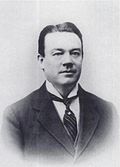15 November 1922 | |||||||||||||||||||||||||||||||
All 13 seats in Northern Ireland to the House of Commons | |||||||||||||||||||||||||||||||
|---|---|---|---|---|---|---|---|---|---|---|---|---|---|---|---|---|---|---|---|---|---|---|---|---|---|---|---|---|---|---|---|
| |||||||||||||||||||||||||||||||
The 1922 United Kingdom general election in Northern Ireland was held on 15 November 1922. There were ten constituencies, seven single-seat constituencies with elected by FPTP and three two-seat constituencies with MPs elected by bloc voting. Only two of the constituencies had contested elections.
Contents
It was the first election held after the Government of Ireland Act 1920, which had reduced the number of seats in the House of Commons of the United Kingdom in the region designated as Northern Ireland from 30 to 13. It was also the first election held after the approval of the Anglo-Irish Treaty, whereby the Irish Free State separated from the United Kingdom with effect from 6 December 1922, a few weeks after the election was held.
The focus of politics in Northern Ireland had shifted to the Parliament of Northern Ireland, after the first general election to the House of Commons of Northern Ireland in May 1921. The party leaders of the three parties had been elected to seats in this parliament rather than at Westminster.

